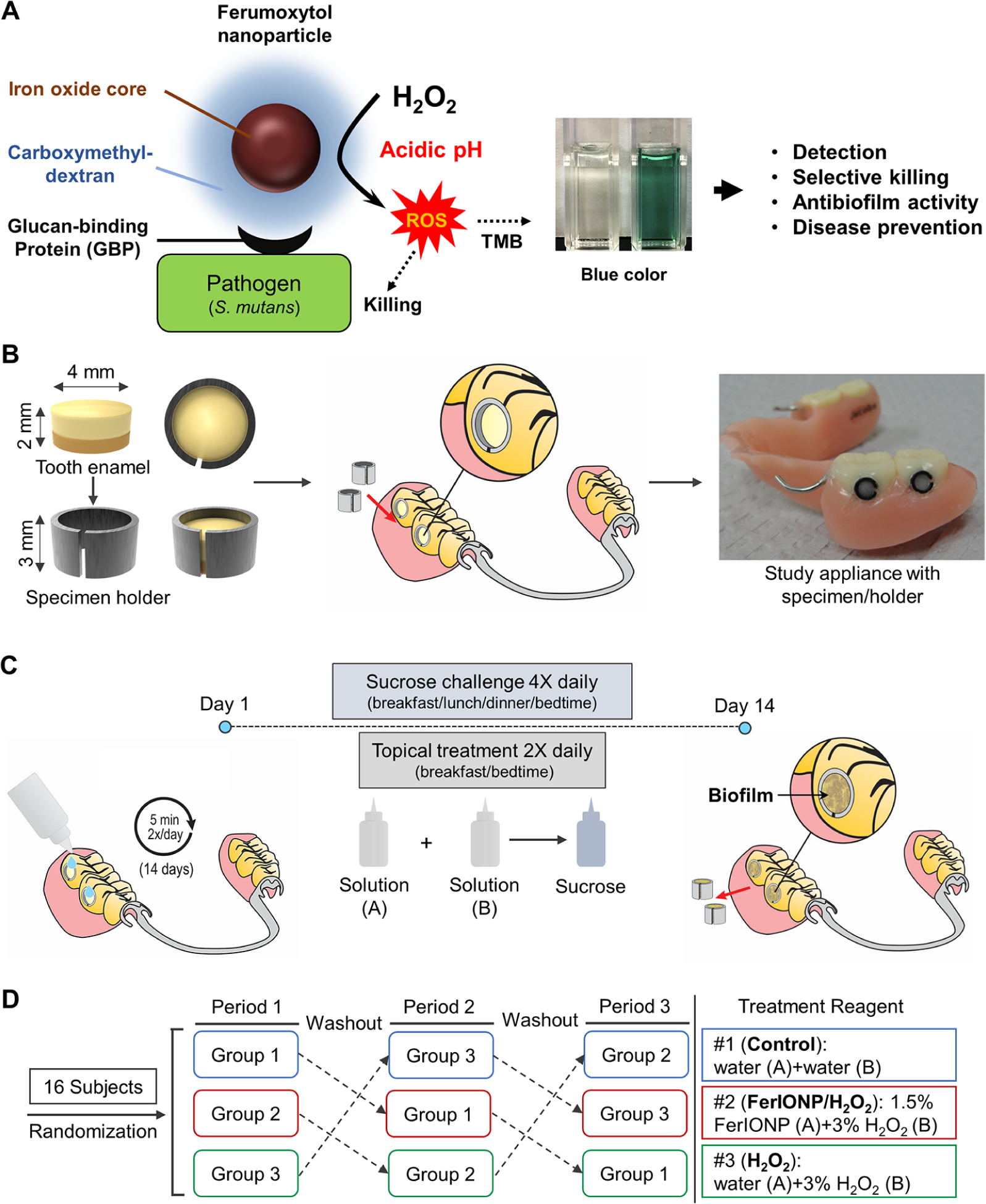Figure 1.

Intraoral human biofilm disease model and treatment regimen. (A) Schematic depiction of the selective catalytic-therapeutic-diagnostic mechanism of FerIONP. (B) Tooth enamel specimen placed in a custom-fit holder assembly that can be implanted in a wearable and personalized partial denture. (C) Treatment regimen. The subjects were instructed to drip one drop from solution bottle A onto each specimen, wait for 5 min, then immediately drip one drop from solution bottle B onto each specimen and wait for an additional 5 min. The concentration of H2O2 in solution B was 3%, but we added solution B after the solution A treatment at a 1:1 ratio. Thus, the final concentration for H2O2 during the procedure was 1.5%. This was followed by applying a 20% sucrose solution onto the specimens for 3 min to provide a cariogenic challenge. (D) Randomized crossover design with three test periods utilizing 16 subjects. At each study period, subjects received different treatment products, followed by a one-week washout period. All the data were collected from 15 participants since one subject lost the partial denture.
